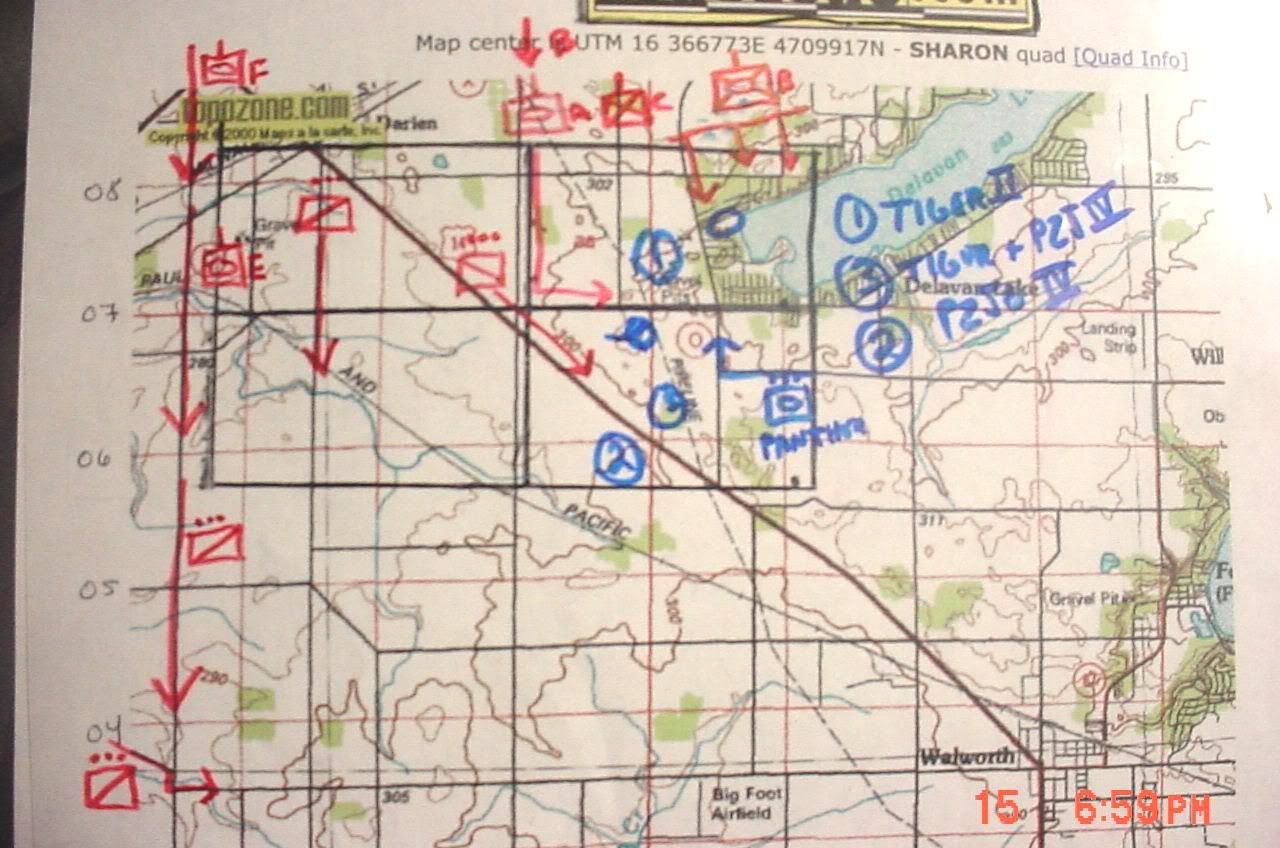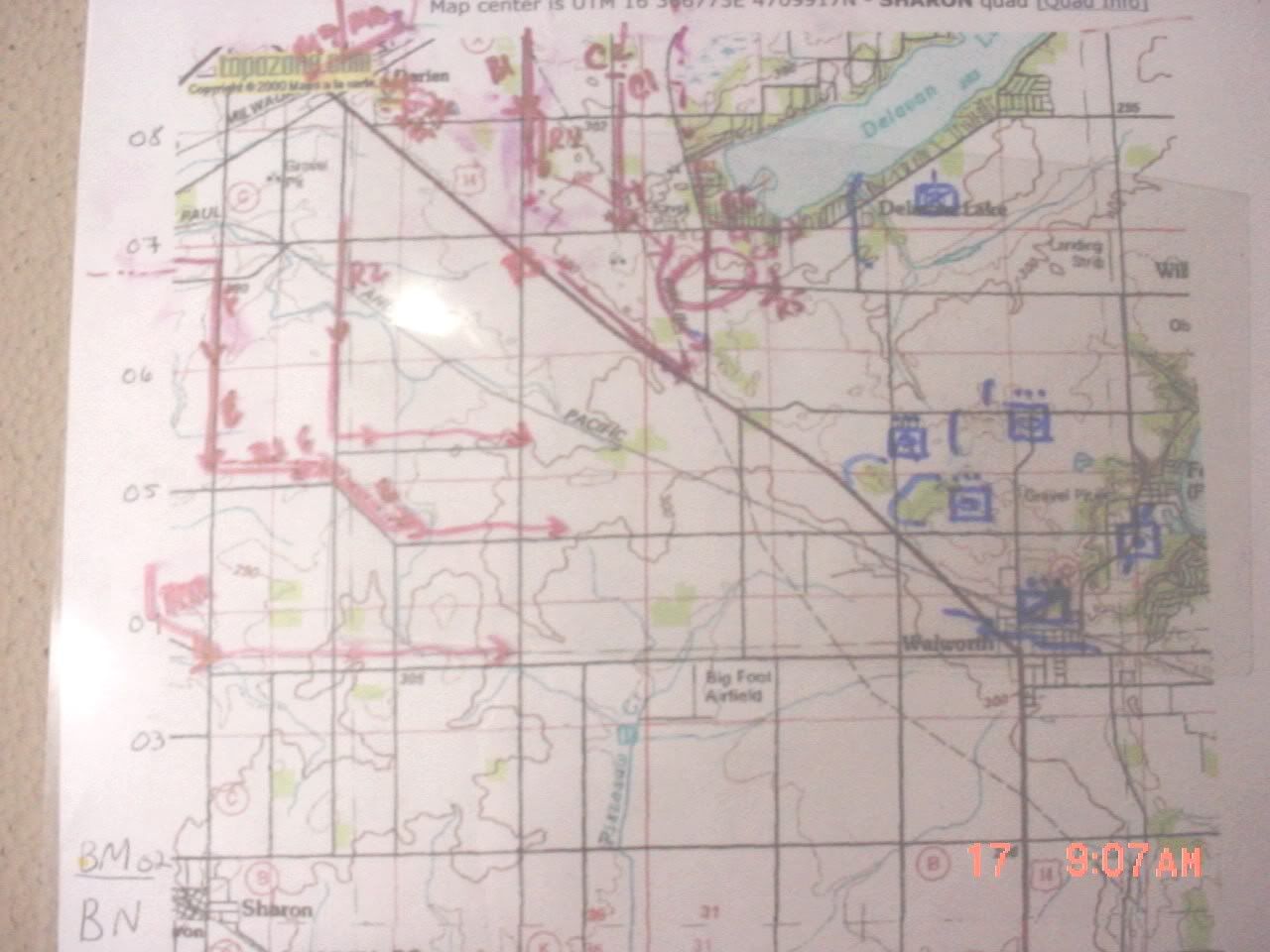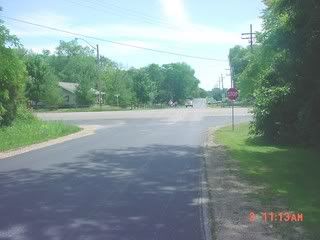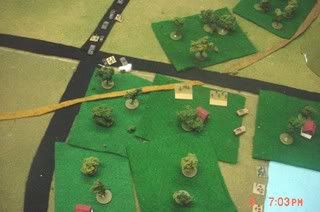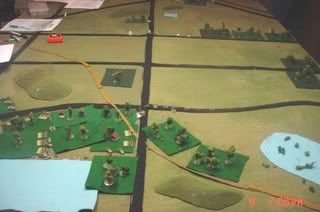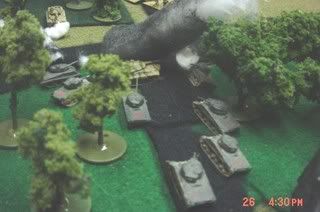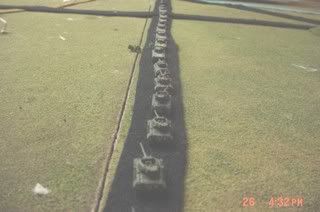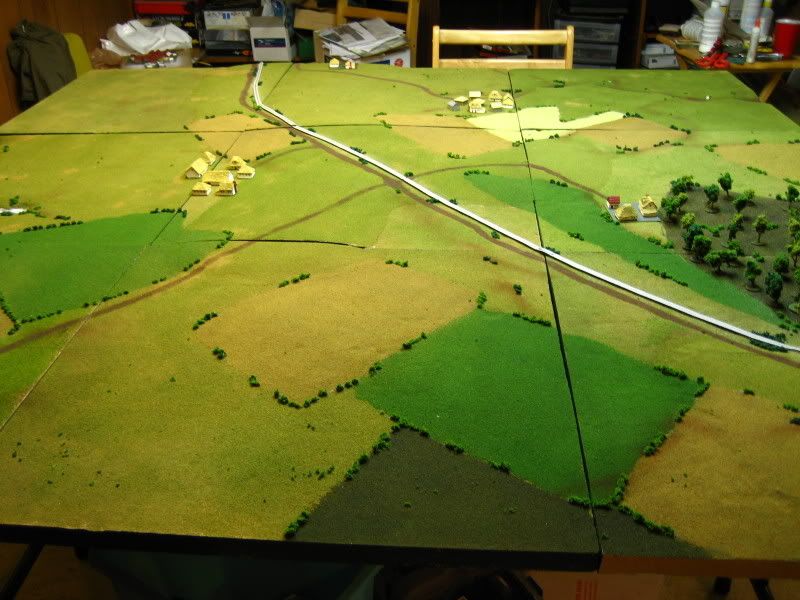You can indeed make plaster squares, or rectangles, in a manner similar to the hex's shown on GHQ's guide.
You can also make those squares or rectangles out of other materials than plaster, such as using ceiling tiles, flooring squares, or cut plywood.
You will find lots of information on how to do that on several of the threads here. Try the Show Us Yer Stuff thread, and the Buildings & Towns thread. Also, check out the websites that several members here maintain, which have modeling guides often including terrain-making. Notable among the sites to visit are Ritter's, Cama's, 1ComOpCtr's, and Thunder's. I'm sure I've neglected 4 or 5 very worthy sites as well. Nose around a bit, and you'll see several contributors here who list their websites in their nick's or their .sig's.
But also, I would not be too fast to give up on the cloth-covered table direction either. I've been gaming for more years than I'd care to mention (though I often do

), and as much as I do love playing on some of the extraordinary terrain boards my gaming mates have created, for myself I have implemented the cloth-covered-table approach and it serves me just fine.
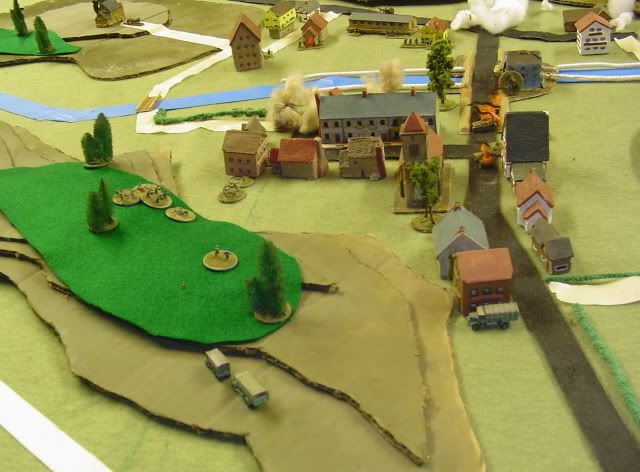
This is a picture from the most recent game played at my home. For a full account, check out the Show Us Yer AARs thread.
I use a ping-pong table. I cover it with a felt cloth, on which I have denoted the edges of an area that comes out to 5 x 8 Km in game scale. So I have 40 sq Kms in which to conduct my gaming manuevers. I have two cloths -- one green, one tan. So I can do temperate or desert terrain. I use corrugated cardboard for elevations. I have simply slided-up many of the boxes that have come into my house over time. Sometimes I glue these elevations together to make pre-designed hills, but most of the elevations have been left seperate, so I can stack as many or as few as I want and create that much more variation in my terrain. I use these cardboard cut-outs as platters for my tanks when I spray-paint their base-coats, so over a little time I manage a collection of many terrain elevations that are painted in the terrain types that my tanks are camo'd for. I generally paint different colors on each side of the cardboards, so they can be reversed and used for both types of terrain. (Also, if the carboard is left un-painted it makes a decent desert bare-earth terrain.)
For my most recent battle, I sprayed a little diluted white glue over a couple of my pre-made hills, and sprinked on the mixed flocking that was left-over from several sessions of mounting and basing infantry figures. It was a very thin flocking given the surface area of the hillse, but still I think it came out nicely.

Here is an example of my desert terrain ... in this case a US Army force is advancing on the Arab quarter of a Tunisian town in early 1943.
I use tape -- black or gray for paved roads, blue for water, tan for dirt roads. I use felt cut-outs to show the edges of woods, with some trees spread over them (it is hard in this scale to manage a reasonable woods, as you need thinner fingers than I am equipped with to move the tanks between the trees).
A good variety of buildings helps. I have many commercially-bought buildings. Most are cast resin, some are cast plaster, a few are vacu-formed. I don't have any metal buildings of the GHQ line, but I can tell you from playing with other people's terrain that the GHQ buildings are quite nice. I also have a fair number of scratch-built structures of two primary classes -- hand-made from carved balsa, and vacu-formed plastic packaging materials that I have cut-out and painted up to my purposes.

This picture is a game played on Thunder's terrain boards, using my buildings. His boards are plaster-on-plywood rectanges, 2 x 4 ft each. His boards are sculpted for elevations, and he has flocked the open country and placed paved roads and hedges on them, but not forrests or buildings. In this particular game (a Barbarossa 1941 battle), we used sand for dirt roads, and blue tape to turn some of his paved roads into streams. The factory complex you see mid-board was made from the plastic keyboard cover that came with a PC.
All in all, in about half an hour to 45 minutes I can create any European or Mediteranian terrain that I want to, short of high mountains or ocean-front. Or winter. But using a white cloth, and painting some of the elevations white, and spraying a little brown or tan for some thinner snow / mud, I think a perfectly reasonable snowscape could be made. And ocean-front would not be tough to create using this approach ... it would just take a fair bit of blue felt and maybe some 4-inch wide masking tape for the beach.
Just some ideas. Your mileage may vary.



